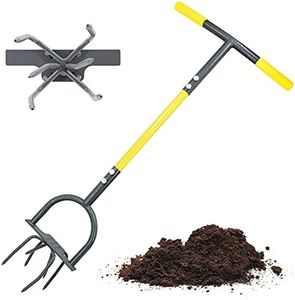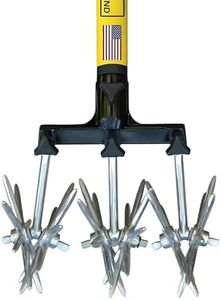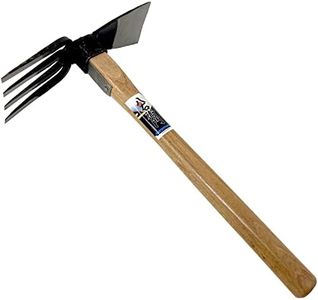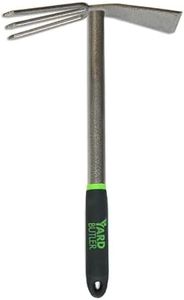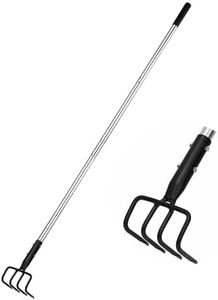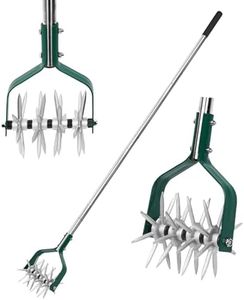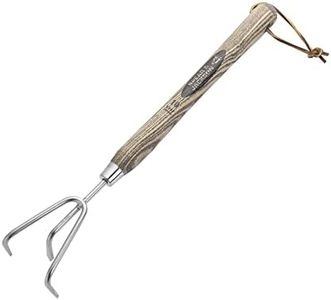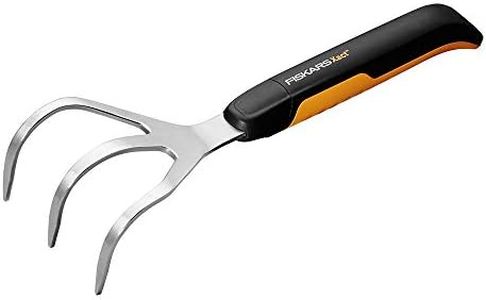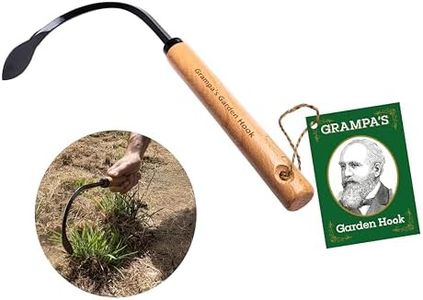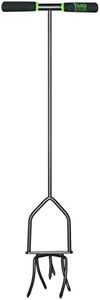We Use CookiesWe use cookies to enhance the security, performance,
functionality and for analytical and promotional activities. By continuing to browse this site you
are agreeing to our privacy policy
10 Best Manual Garden Tillers
From leading brands and best sellers available on the web.Buying Guide for the Best Manual Garden Tillers
Choosing the right manual garden tiller involves understanding your garden's size, the soil type, and how much physical effort you're ready for. Manual tillers are great for people who enjoy a hands-on approach to gardening, want to avoid gas or electric tools, or need a lightweight tool for small spaces. It’s important to focus on how the key features match your own garden needs and your body's abilities to make the work efficient and comfortable.Tilling WidthTilling width refers to the span of soil the tiller can cover in one pass. A wider tilling width means you can cover more ground quickly, which is helpful for larger areas. However, if your garden space is tight or you have lots of plants already growing, a narrower tiller is easier to maneuver between rows. If you have a big vegetable plot, go for a wider tiller. If you’re working in flower beds or confined spaces, something narrower is more practical.
Tine ConfigurationTines are the blades that dig into the soil. Their shape and arrangement determine how well the tiller can break up dirt and roots. Some tillers have tines that dig deeper, while others are designed to chop weeds near the surface. For hard or compact soil, look for sharper and sturdier tines designed for digging deep. For weeding or mixing soil in softer beds, lighter tines may be enough. Match the tine type to your garden soil: hard and rocky soils need robust tines, while soft soil allows for lighter options.
Handle Design and LengthHandle design affects how comfortable and effective the tiller is to use. Ergonomically shaped handles with padding help reduce fatigue, and the right length lets you work without bending over too much. Short handles are easier for people working in raised beds, while longer handles give better leverage for tougher ground. Think about your height and the kind of soil you’re working with: choose a handle that lets you stand upright comfortably as you till.
WeightWeight influences how easy the tiller is to use and move. Lighter tillers are easier to carry, lift, and operate, making them great for quick jobs or for those who prefer less physical effort. Heavier tillers may dig better and help break up hard soil, but they require more strength to control and use. If you’re looking for a tool to use occasionally for maintenance, a light model is usually a good pick. For prepping new, tougher ground, a bit more weight can help.
AdjustabilityAdjustability means that parts like the handles or tines can be changed to fit different users or tasks. Adjustable handles allow people of different heights to work comfortably, and tines that can be adjusted for different depths give you more control over how the soil is prepared. If multiple people are going to use the tiller, or if you have a range of gardening tasks, it’s helpful to choose a model with adjustable features.
Ease of Cleaning and MaintenanceManual tillers, like all garden tools, need to be cleaned and maintained to last longer and work well. Some designs have removable parts or simple structures that make them easy to wash and store. Choosing a tiller with rust-resistant materials and straightforward construction helps ensure you spend less time cleaning up after gardening. If you want a low-hassle tool, look for options that are easy to wipe down and don’t have too many small spaces where dirt can get stuck.

